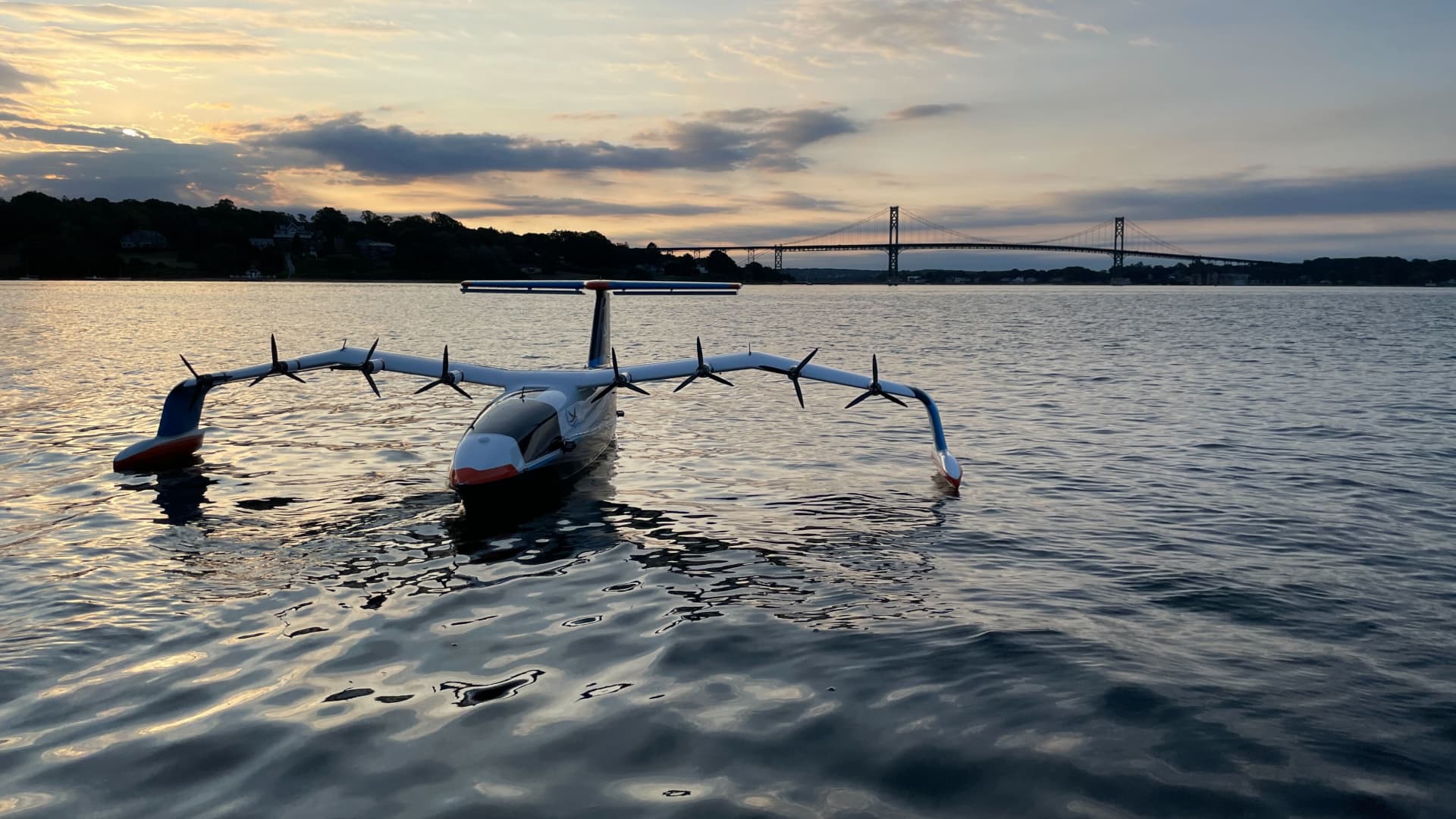Technology
Wednesday, September 21st, 2022 4:39 am EDT

Regent, a startup developing electric flying boats, has completed a series of test runs on the Narragansett Bay in Rhode Island to prove its unique vehicles can “float, foil and fly” as expected.
The co-founder and CEO of Regent, Billy Thalheimer, said the company has already amassed a backlog of $7 billion worth of orders for its seagliders.
The first version it plans to roll out, the Viceroy, will be able carry 12 passengers between coastal or island destinations faster than buses, trains or traditional ferries, and at a lower price than a commercial flight, Thalheimer says. It’s due to enter commercial service by the end of 2025, the company says.
To prepare for this commercial launch, the company built a quarter-scale version of the Viceroy for real-world testing.
This prototype model, nicknamed the Squire, was able to motor out of a harbor in Rhode Island slowly, then launch from a speed of about 40 mph into the air, where it flew about 10 feet above the open ocean at a speed of up to 50 mph. The commercial version will fly higher above the water at speeds up to 180 mph, the company says.
Eventually, travelers should be able to go down to a dock and board these seagliders like they would a regular ferry or water taxi.
The seaglider, which launches and lands with the help of remote controls and a partly automated system, traverses through a harbor and amid boat traffic, powered by a rechargeable lithium-ion battery. It cuts through the waves on hydrofoils, which are like underwater stilts or wings that give a boat tremendous wave tolerance, making for a smooth ride even in choppy waters.
Once on the edge of the harbor, the Regent seaglider accelerates and takes off, staying within one wingspan of the water’s surface. “It’s like flying on a cushion of air – something like a pelican,” the CEO said.
The tricky part, technologically speaking, according to Regent co-founder and CTO Mike Klinker, is designing a vehicle that can make this transition from floating on a hydrofoil to lifting above the water.
“When the vehicle is in the hydrofoils, basically it’s like driving above the water surface on stilts,” the CTO said. “The waves pass beneath you. You’re really insulated from any waves or instability that would make a traditional boat ride uncomfortable for a passenger.”
Once the boat lifts off the surface and has pulled those hydrofoils out of the water, “It’s like being in a traditional airliner where it’s a very smooth ride with the exception that we are flying low over the surface of the water, giving you something like a second-story house window type of view of the ocean, and a great view of the cities around you,” Klinker said.
Following successful tests over the summer, Regent now aims for the Viceroy seaglider to enter service by the end of 2025. The startup is also developing a 100-passenger seaglider, dubbed the Monarch, that can carry 25,000 pounds of payload. It hopes to launch this larger model into service by the end of 2028.
Watch the Squire in its first test flights in Rhode Island here.
This post has been syndicated from a third-party source. View the original article here.




